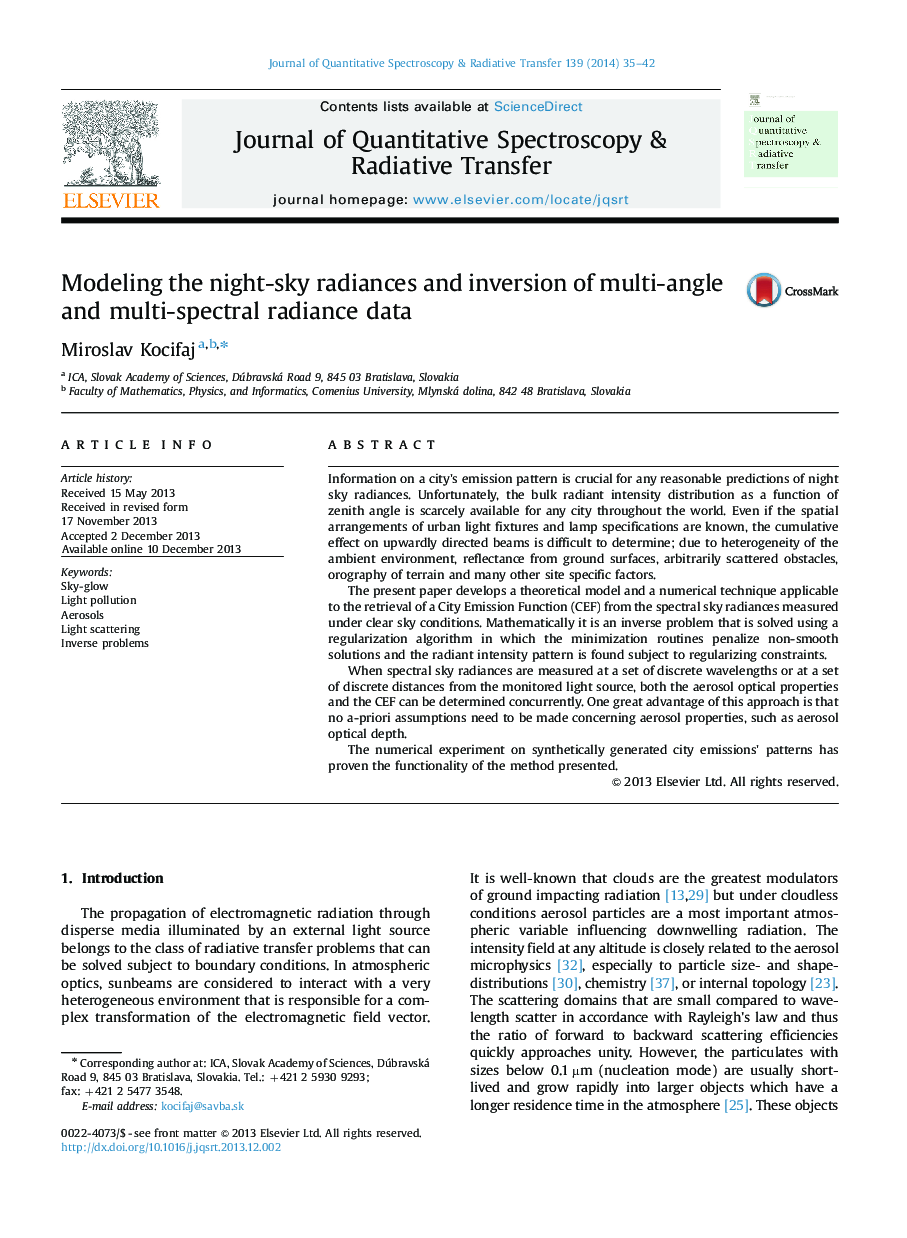| کد مقاله | کد نشریه | سال انتشار | مقاله انگلیسی | نسخه تمام متن |
|---|---|---|---|---|
| 5428474 | 1508676 | 2014 | 8 صفحه PDF | دانلود رایگان |
- Spectral sky radiance data can provide information on ground-based light sources.
- Radiant intensity as a function of zenith angle is inferred from optical data.
- Simultaneous retrievals of both aerosol and light-source properties are possible.
- Targeted numerical experimentation has proven the functionality of the method presented.
- Synthetically generated intensity patterns have been reconstructed successfully.
Information on a city's emission pattern is crucial for any reasonable predictions of night sky radiances. Unfortunately, the bulk radiant intensity distribution as a function of zenith angle is scarcely available for any city throughout the world. Even if the spatial arrangements of urban light fixtures and lamp specifications are known, the cumulative effect on upwardly directed beams is difficult to determine; due to heterogeneity of the ambient environment, reflectance from ground surfaces, arbitrarily scattered obstacles, orography of terrain and many other site specific factors.The present paper develops a theoretical model and a numerical technique applicable to the retrieval of a City Emission Function (CEF) from the spectral sky radiances measured under clear sky conditions. Mathematically it is an inverse problem that is solved using a regularization algorithm in which the minimization routines penalize non-smooth solutions and the radiant intensity pattern is found subject to regularizing constraints.When spectral sky radiances are measured at a set of discrete wavelengths or at a set of discrete distances from the monitored light source, both the aerosol optical properties and the CEF can be determined concurrently. One great advantage of this approach is that no a-priori assumptions need to be made concerning aerosol properties, such as aerosol optical depth.The numerical experiment on synthetically generated city emissions' patterns has proven the functionality of the method presented.
Journal: Journal of Quantitative Spectroscopy and Radiative Transfer - Volume 139, May 2014, Pages 35-42
